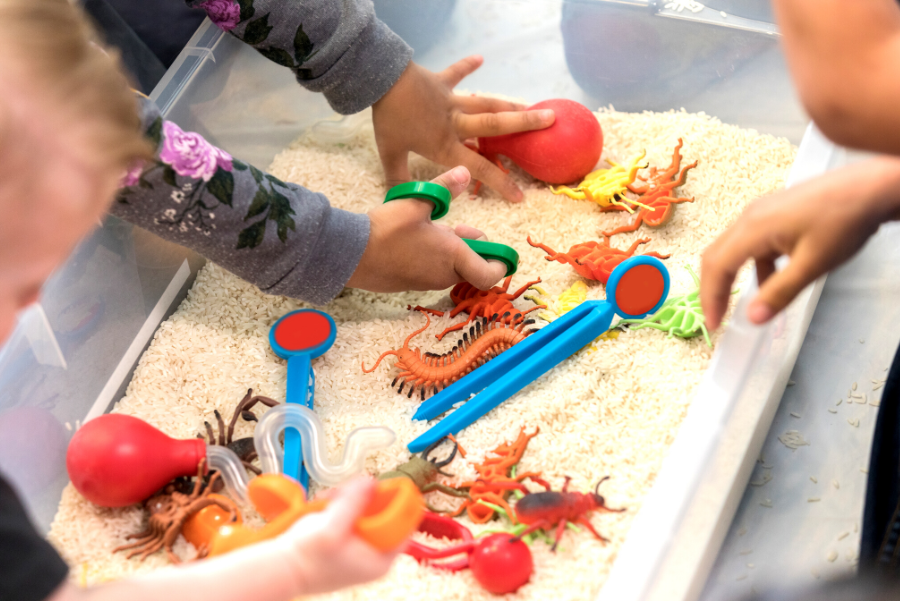
Unlocking Your Child’s Potential: The Benefits of Sensory Play
At Play Sense, we have a play-based learning program to suit every family. Enrol your little one and give them the best start to learning. Get in touch to find out more.
You’ve probably heard of sensory or messy play. It usually involves water or sand, bubbles, shaving foam, play dough, flour, or gloop – a combination of interesting textures and simple activities that can keep little ones utterly captivated.
But before we talk about why messy play is so critically important to your child’s development, we have to talk about the fact that messy play is not about making a mess. What looks like a tub of green jelly, twigs, pebbles, and plastic dinosaurs is actually a powerful way for little ones to explore, learn and develop their senses, social skills, and critical thinking.
To really understand the benefits of sensory play, we have to see it in the context of how the brain develops. We all have sensory information that comes from our peripheral nervous system – things like touch, smell, a feeling of movement and proprioception from our body. This sensory information goes to an area of the brain called the prefrontal cortex (PFC).
The PFC is involved in important cognitive functions like the ability to learn and understand language. This part of the brain will change and develop until the age of 25 but in the toddler years, the PFC also helps little ones with motor planning, spatial reasoning, and it’s even a foundation for maths later.
So, how is messy play linked to mathematical ability?
Messy play entails taking lots of sensory information from the sensory activity they’re engaged in up to the brain and forming what’s called a ‘body schema’ of where we are in space. Sounds simple enough but it’s actually achieved through a complex process of integrating sensory and motor systems. Messy play is a way to foster that process.
A simple but highly sensory activity like making a ‘cupcake’ with play dough involves touching, squashing, rolling, cutting out shapes and placing the pieces together (motor skills). Your little one also needs to talk about what needs to be done (language), plan, problem solve, use their creativity and imagination.
The best part is that they are taking in all this sensory information through play. Messy play is engaging. Little ones are quickly engrossed in the task at hand and can be occupied for ages in a learning cycle that starts with curiosity – experimentation – repetition and finally, mastery.
So, next time your little one is pouring water into different size containers or building sandcastles – remember that they are laying a lasting foundation for physical movement and lifelong learning.
Leave a Reply
You must be logged in to post a comment.